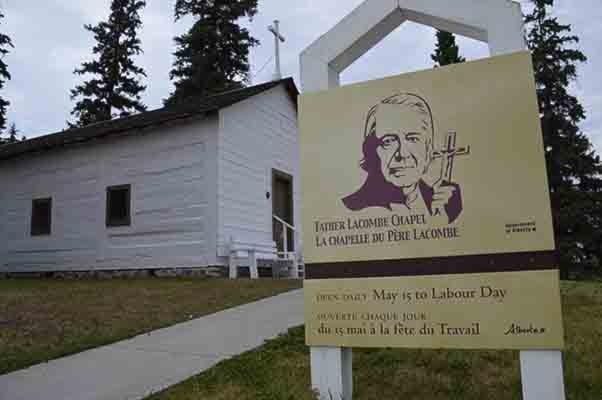Every July 1 we celebrate the founding of Canada and between the parades and fireworks we also review the contributions made by the various fathers of confederation whose dreams and efforts developed the country we call Canada.
What we often forget is the individuals who were not around the tables in Charlottetown that took those dreams and made them a reality. One such individual was Father Albert Lacombe. Father Lacombe was born in 1827 and at the age of 22 became an ordained priest. After a two-year mission to Pembina in the Minnesota territory he returned to eastern Canada but the west had grabbed him so in 1852 he was knocking on the doors of Fort Edmonton. Here he became familiar with the Cree language and soon had translated the New Testament into Cree.
For several years Father Lacombe roamed Alberta from Fort Dunvegan in the north to Rocky Mountain House in the south. He used Lac Ste. Ann as a base trying to change the nomadic lifestyle of the Cree to an agricultural one. But in 1861, after a number of failed crops, Father Lacombe decided to move his mission to a place along the Sturgeon River, which would eventually become known as St Albert.
From here he began to expand his efforts further south and would assist in bringing the Blackfoot and the Cree together to end the war between the two tribes. Father’s Lacombe success drew the attention of other missionaries that would include Father Leduc and Father Scollen. As he travelled throughout Alberta he developed a number of friendships with the voyageurs who accompanied him on his travels.
In 1872 Father Lacombe was sent to Manitoba to encourage the colonization of that province and it would be during this time he began his relationship with the CPR. For the next ten years Father Lacombe had a major positive impact on the relationships between the Cree, Metis, and the European settlers.
Father Lacombe was called back to Alberta in 1882 when Father Scollen retired from the mission in Calgary. This time he was asked to negotiate an agreement between the CPR and the Blackfoot leader Chief Crowfoot. Upon his success the CPR awarded both Chief Crowfoot and Father Lacombe lifetime passes. In 1885 Father Lacombe was able to use his relationship with Chief Crowfoot to convince Crowfoot to remain neutral during the Northwest Rebellion, to the gratitude of Sir John A MacDonald.
When CPR’s President William Van Horne asked for Lacombe’s help in compiling as list of names to be used to identify the various stations being established by the railroad Father Lacombe gave him a list of names that included many of the missionaries and voyageurs who had helped him settle Alberta. Today many of the names of Alberta communities can be traced to the list Father Lacombe submitted. One of them was August Millet, a voyageur, whose name was accepted for the station located south of Leduc.
Once Father Lacombe felt confident the church’s missions were well established he turned his attention to founding schools throughout the territories.
At the age of 77 Father Lacombe founded a new church in Midnapore in 1904. The church still stands along Macleod Trail in Calgary. When Father Lacombe died at the age of 89 in 1916 he left a legacy unequaled by any other Alberta resident. He came when Alberta was a part of the Northwest Territories and left his mark from one end to the other by the time it had become a province. So when you are watching the fireworks remember the priest who had a twinkle in his eye and how his efforts can still be seen all around Alberta.
